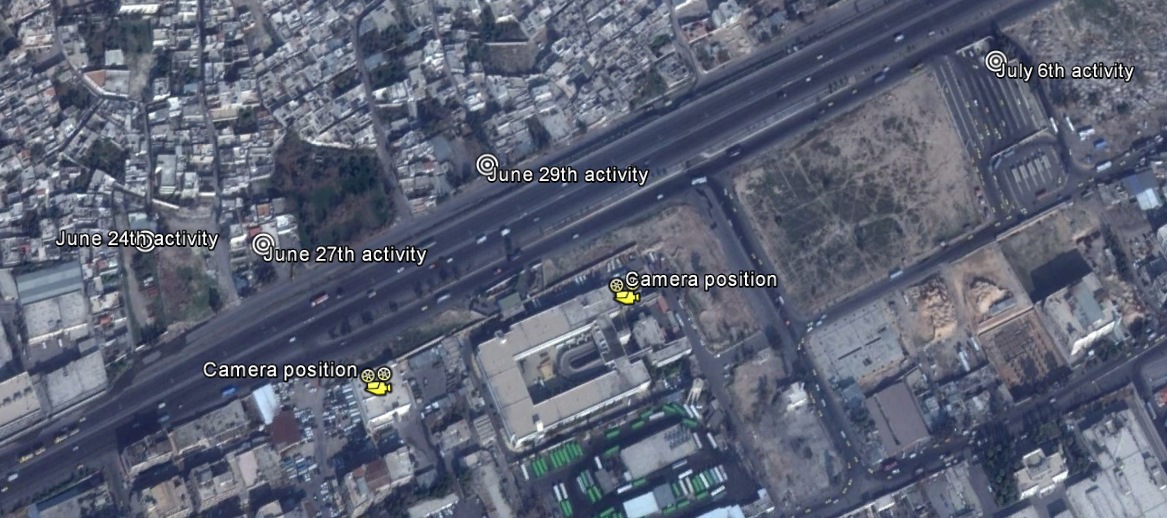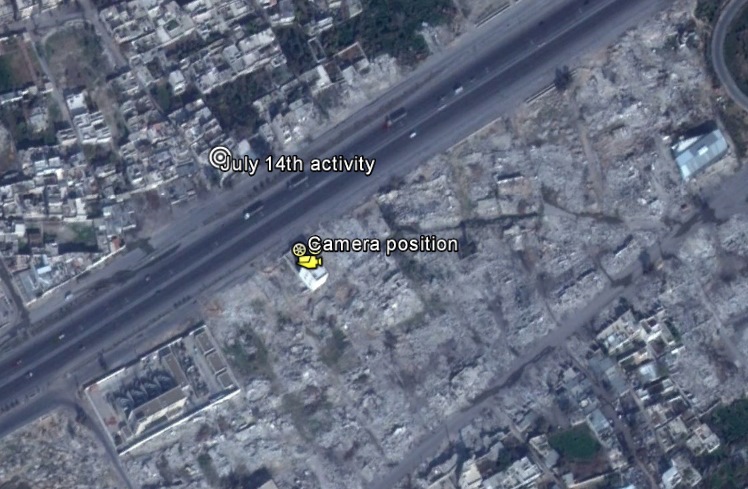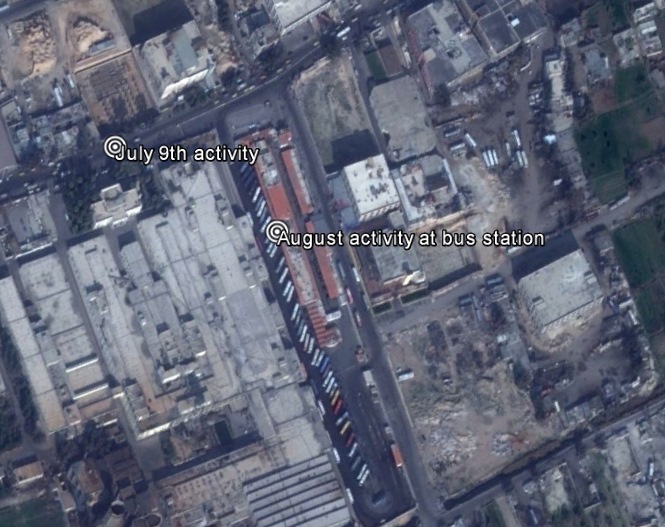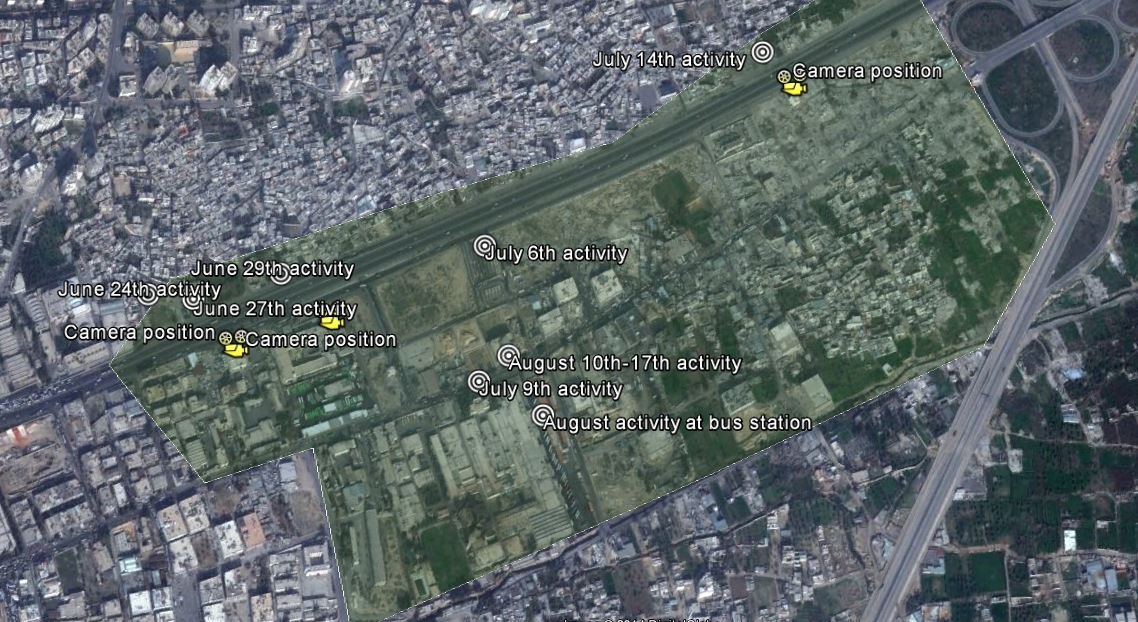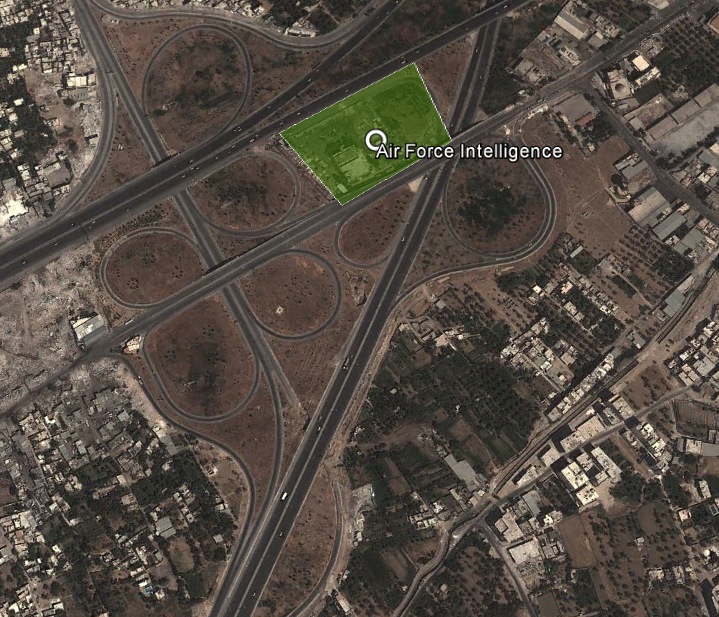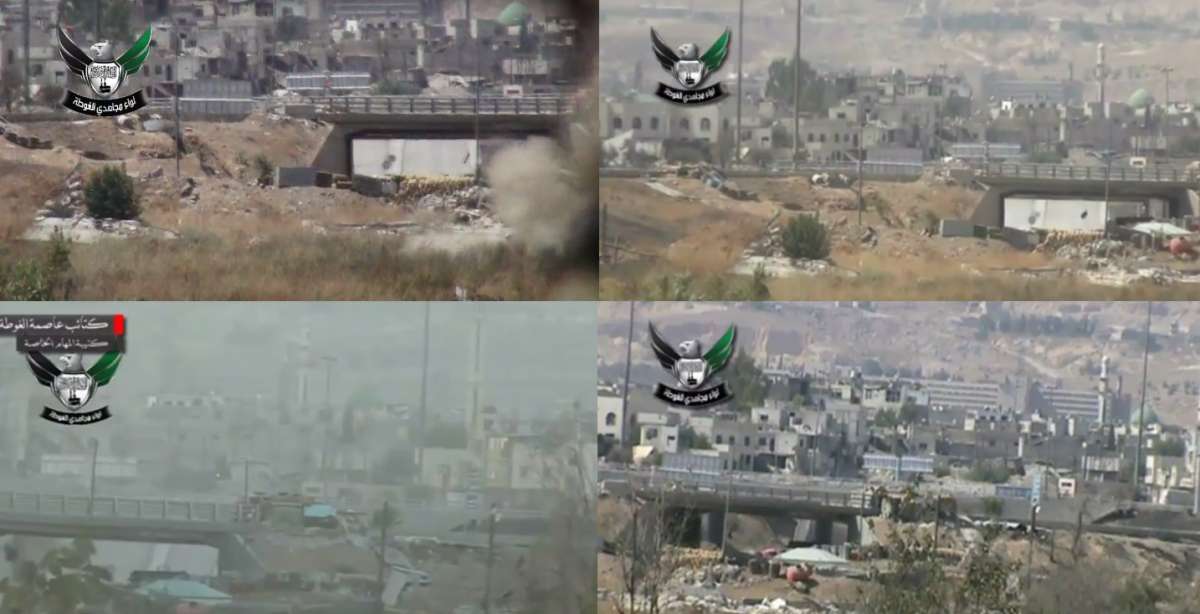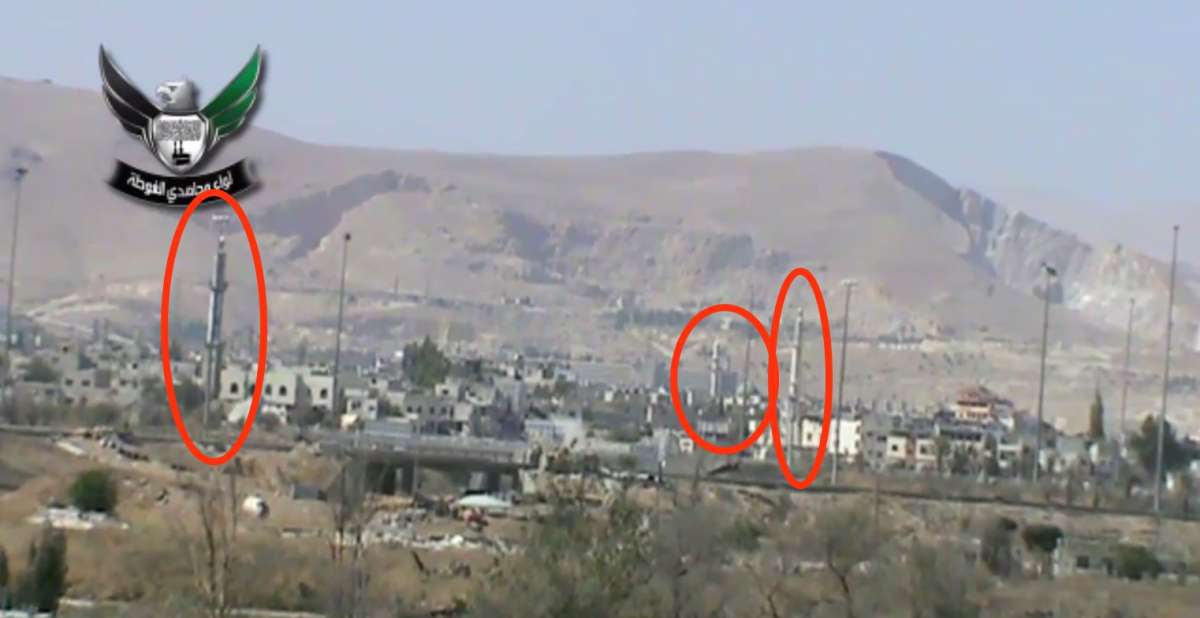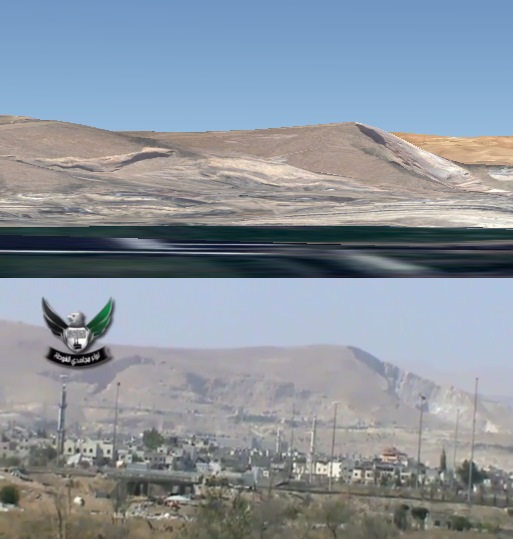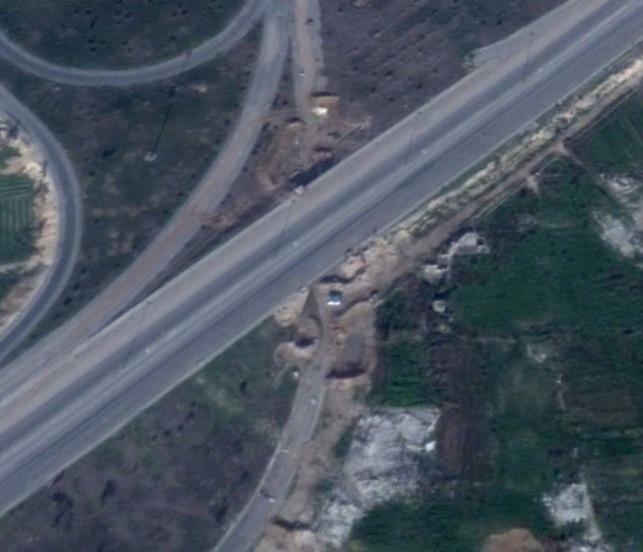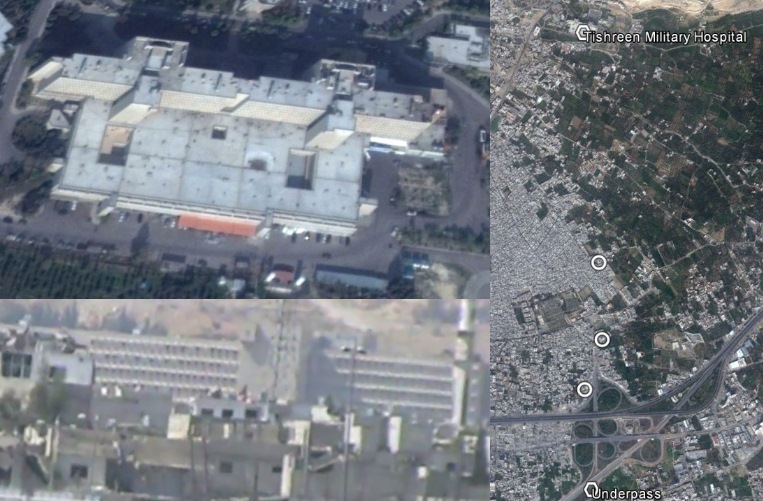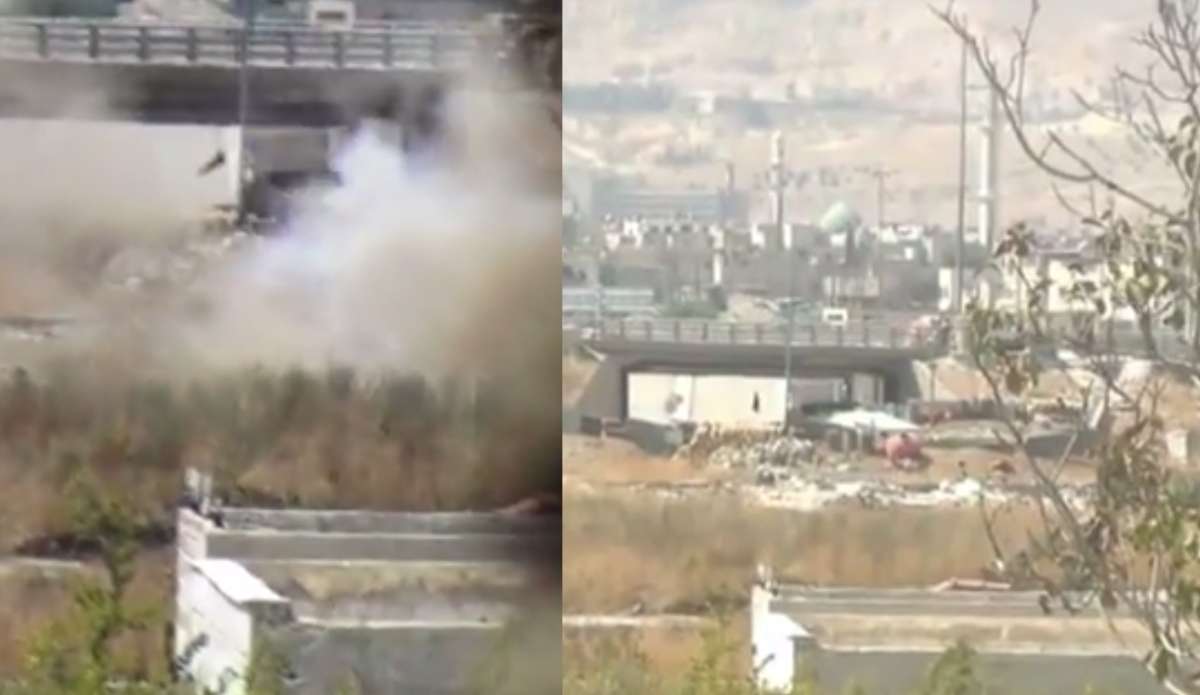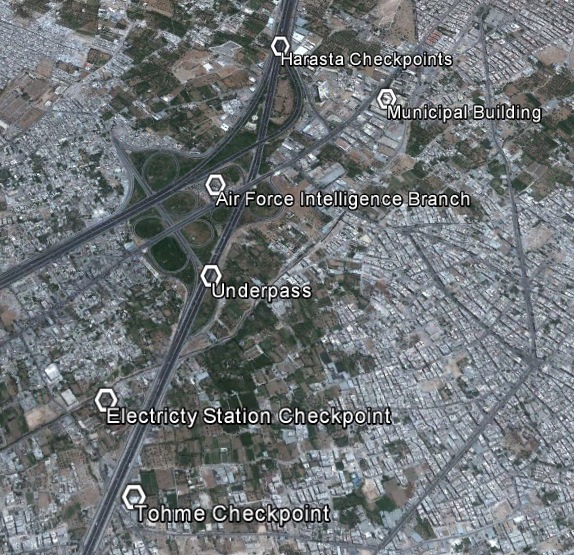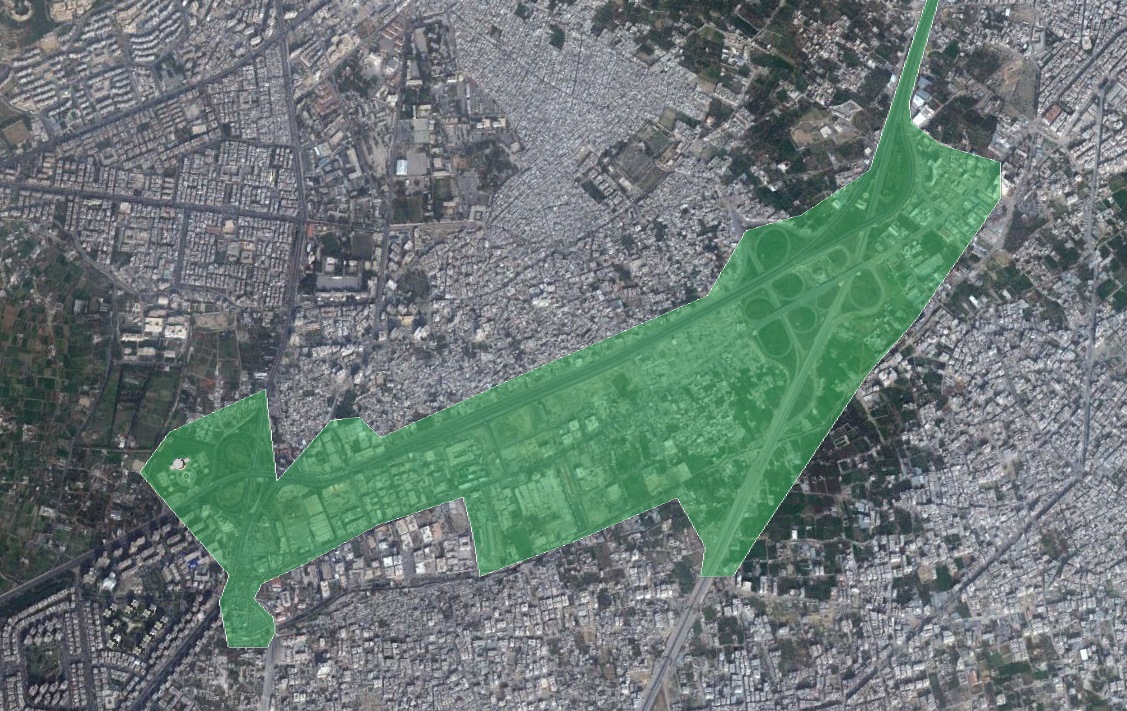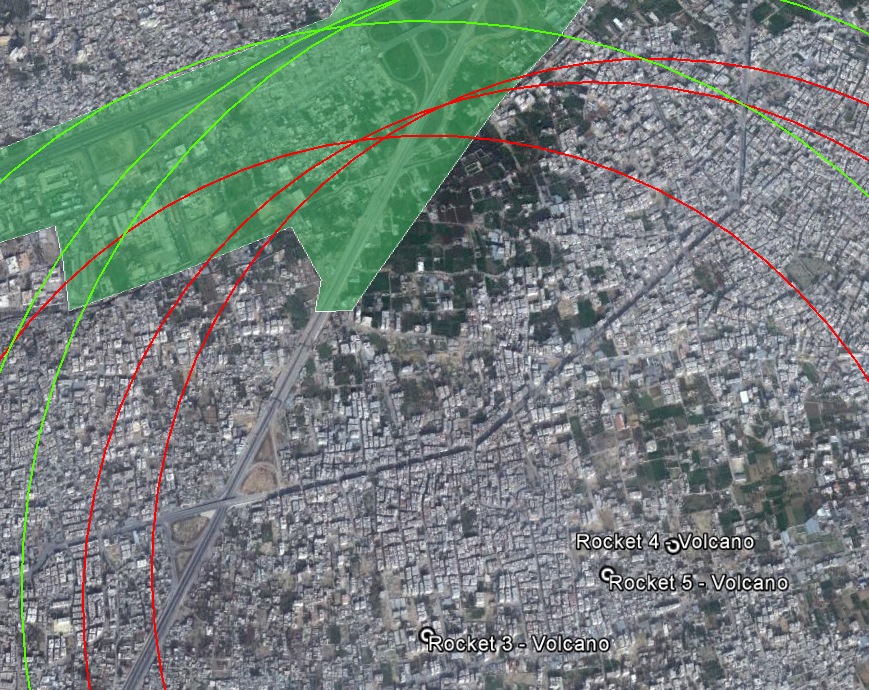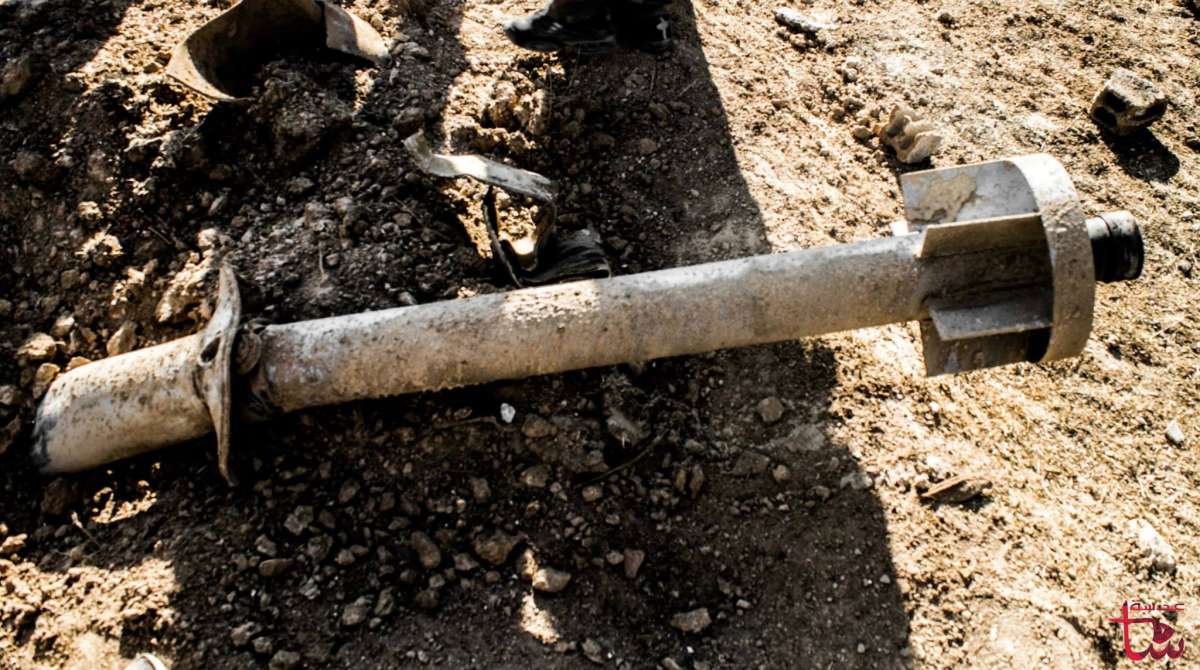Identifying Government Positions During The August 21st Sarin Attacks
Operation Al-Qaboun
In the months preceding the August 21st Sarin attack the Syrian military began Operation Al-Qaboun in a region between Jobar and Qaboun, close to the areas attacked in Eastern Ghouta on August 21st. This region has been contested for several months, with government forces controlling bases and checkpoints in the area, but with the opposition controlling much of the area, and Qaboun and Jobar to the north and south.
ANNA News, a Russian language news organisation embedded with the Syrian military in Damascus filmed a series of videos showing the operation’s progress from June onwards. Using these videos it’s possible to geolocate where the videos were filmed, and show the progress of the operation until August 20th, the day before the Sarin attack. They both establish the Syrian government would have been on control of territory that would have allowed them to launch the August 21st attacks using the Volcano rockets recorded at the impact sites, despite their relatively short range, and provide a possibly explanation for the purpose of the attack.
Videos of Operation al-Qaboun can be put into three broad categories; clearing the 6th Tishreen road to the north of the area, clearing the central area and the bus station, and the occupation of the deserted residential area to the southeast. It’s important to note that it cannot be certain that the upload dates of the videos are close to the days on which the activity shown in the video took place, and multiple videos published over a number of days may in fact show military activity on one day.
The first videos from Operation al-Qaboun were uploaded to YouTube by ANNA News at the end of June, and they show the Syrian military working their way eastwards, clearing buildings on the north side of the 6th Tishreen. What they also reveal is the position of the ANNA News cameras, which appear to be in static locations over a number of days, suggesting these areas weren’t particularly exposed to opposition fire.
The first video from June 24th (mapped here) shows government forces probing a small group of buildings across from the camera position set up by ANNA News near a bus garage which appears to be used as a government base. Videos from June 27th and June 29th show progress eastwards, with a video from July 6th showing an artillery strike on a structure inside a small bus depot on the south side of the road.
On July 14th the position of the ANNA News camera shifted to a Syrian military support position, and began filming activity to the north of the road. As with earlier videos, the government forces were clearing buildings overlooking the 6th Tishreen, and it appears government forces were able to achieve their objectives.
The “bus station” phase of Operation al-Qaboun involved areas south of the 6th Tishreen, beginning with a video published on July 9th showing government forces attacking a building just north of the bus station. It appears that during the bus station phase government forces are occupying the large building to the west of the bus station, and using that to launch attacks to the east, clearing the bus station.
The final phase of the operation begins with the buildings just north of the bus station being cleared in videos published on August 10th onwards. After the three videos showing the building being cleared a fourth video is published on August 20th. This video is a tour of areas captured by the Syrian military to the east of the bus station, and includes footage inside a deserted residential area that had been used as a base of operations by the Syrian opposition in the area. The video shows captured operation rooms, tunnels used by the opposition to move around the area (as seen in other Operation al-Qaboun videos), and destroyed vehicles. By following the path taken in the video it’s possible to establish are large amount of the area has been captured by the Syrian military.
Based on the ANNA News videos alone, it seems reasonable to assume the government was in control of the following area on August 21st.
Elsewhere in the area
Aside from the areas filmed by ANNA News, there’s a number of videos posted by opposition forces that provide more information on what the situation on the ground was on August 21st in other areas likely linked to the August 21st attacks.
The Air Force Intelligence Branch is located to the east of the area Operation Al-Qaboun took place in, and the area surrounding it is considering one of the possible launch sites for the Volcano rockets used on August 21st. A number of videos uploaded to YouTube by opposition groups gives a clear idea of the situation in the area, and four of these videos uploaded between August 12th and September 19th 2013 confirm the presence of a checkpoint to the south of the base, on the Southern Highway between Jobar and Qaboun.
These videos show a checkpoint on the Southern Highway being targeted by mortars, a M60 recoilless rifle, and a DIY mortar cannon, and it’s not only possible to find the precise location being targeted, but also the location of some of the cameras filming the impacts.
All four videos are filming the same location, from slightly different angles. Using the information in the video it’s possible to pick out a number of key visual clues to the locations
– Mountains in the background
– Three minarets (marked above), and the green dome of one mosque
– A underpass the checkpoint appears to be near
– A large building far in the distance
The mountains in the background of the video are the first clue to the direction the camera is pointing. There’s a large mountain range to the north of Jobar and Zamalka, and it’s possible to compare the topography on Google Earth with what’s visible in the video
This appears to be a strong match, so it appears the camera is facing north. Assuming the opposition are filming a checkpoint on the Southern Highway, it’s possible to quickly find the underpass that appears to be in the video
As the below picture shows, the three minarets are visible on satellite map imagery, including the green dome of the mosque furthest to the north.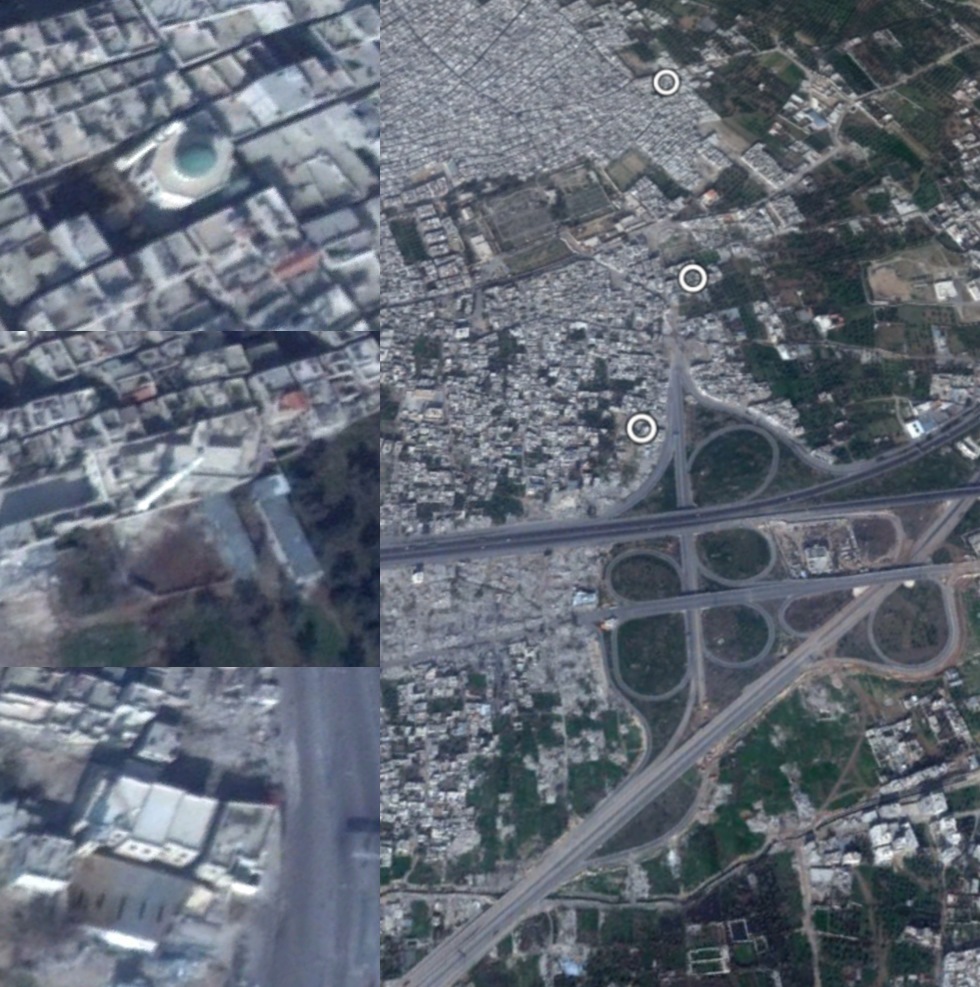
The last piece of the puzzle is the large building far in the distance. This is Tishreen Military Hosptial, a huge building clearly visible on satellite map imagery far to the north of the mosques.
This seems to firmly establish the position of the checkpoint, but it’s also possible to discover the location two of the videos were filmed. In two of the videos, filmed on August 12th and August 16th 2013, the same pair of white buildings appear in both videos
By following the line from Tishreen Military Hospital, past the three mosques, and past the underpass, there’s two white buildings to the south that line up perfectly with the buildings in the video, and as no other buildings are visible it seems likely the camera is positioned to the south of those white buildings.
This means the camera is positioned around 450m from the checkpoint, and it seems that the river that runs east to west just over 200m north of the camera position would act as a natural dividing line between government controlled areas and the fields and orchards to the south.
Aside from this checkpoint, there’s a number of other locations of interest around that area. To the south of the underpass checkpoint, between Zamalka and Jobar, is Tohme checkpoint. The checkpoint is mentioned in a number of videos posted before and after the August 21st Sarin attack, and on August 22nd the checkpoint was reportedly destroyed by the opposition, with Al Jazeera Arabic showing a video of the attack on shortly afterwards, and an 18 minute video showing the operation being published by the group who carried out the attack. Despite this attack, and others, opposition groups still struggled to make progress in the area, and government operations in the area are documented by OSIMINT after August 21st. This video, published on September 6th by Orient News, mentions Tohme as a staging point for tanks used directly after the August 21st Sarin attacks
On the eve of the chemical attack on Zamalka, rebels observed the presence of more than 15 armoured vehicles at Tohme checkpoint. Immediately after the chemical attack these vehicles made a breakthrough and reached a strategic point near Zamalka Bridge, exploiting the rebels’ busyness with helping the victims of the chemical attack.
The regime’s capture of the Southern Bypass would have enabled them to completely separated Jobar from East Ghouta.
A third checkpoint was claimed to exist between the underpass and Tohme checkpoint, known as the Power/Electricity Station checkpoint. Very little information on this checkpoint exists, with only a few reports from local activists about its existence. The inability for local opposition groups to capture the area around Tohme checkpoint appears to have resulted in this checkpoint not playing a significant role in ongoing military activity in the area, so no video or photographic evidence of its position appears to exist.
It’s also possible to confirm the Air Force Intelligence Branch was still in active use by government forces before and after the August 21st attack. On August 14th Al Aan TV reported on prisoners who had escaped from the building, and videos posted in September show the Air Force Intelligence Branch being targeted by opposition groups, as well as armoured vehicles operating in the area.
To the east of the Air Force Intelligence Branch, videos posted by opposition groups after August 21st also show them targeting the local municipal building and surrounding areas, from positions south of the building. To the north, there’s multiple reports from both sides about government checkpoints along the highway running northwards between Barzeh and Harasta. It seems clear that along the highway, to the north and south of the Air Force Intelligence Branch, multiple checkpoints had been established, and they were under the control of the Syrian military on August 21st. Based on the information in the ANNA News videos and opposition videos, it appears the following was under government control on August 21st, with opposition activity in the area limited to occasionally firing into the area.
The following image shows the position of two rockets that landed furthest south on August 21st, with the red line showing 2km away from the impact site, yellow showing 2.25km, and the green line showing 2.5km from the impact site.
The below image shows the range of 3 other impact sites that have been geolocated, with red indicating 2km, and green 2.5km from the impact sites
This final image shows the impact sites reported by the Zamalka Local Co-ordinating Committee, some of which match the 5 geolcated positions already mapped out, and include the impact sites furthest to the south. The red lines indicate 2km from impact sites.
After completing the above investigation I chanced across the article “Motives behind the chemical strikes: the theory of a rebel advance” on the Exit Left blog, published on September 7th. At the end of the article Mohammed Salaheddine, a Zamalka-based spokesperson for Syria Press, describes the area of opposition control on August 21st in the areas described above
On the highway separating Zamalka from Jobar and Qaboun (al-Moutahalliq al-Janoubi), the regime holds a pivotal point at Tohme Checkpoint, a bit north of the pedestrian bridge between Zamalka and Qaboun. To the south of the bridge, the highway is controlled by rebels. However, it remains under relentless regime fire, which has led rebels to use the highway’s under-passage to cross into Jobar. In Jobar, the front line stretches from Zablatani in the south to the Afran (bakeries). In Qaboun, the regime control the western part around the municipality, towards the Abbassiyyin Garages, and in Barzeh, the rebels control Barzeh al-Balad, while the regime holds al-Masaken. As for Zamalka, it is under complete control by opposition forces. In the last 6 months, it sustained four regime attacks that were successfully repelled, the last one a month ago prior to the chemical weapons attack on August 21.
According to the blog, the map of the front-lines based on the information they had gathered would look like this
It seems the opposition positions marked on this map in purple line up very closely to the government positions I’ve marked on my maps. Keep in mind this map was produced on September 7th, well before there was a debate about the range of the rockets being 2-2.5km, with minimal information about the direction the rockets were fired from being available, so it seems extremely unlikely the person creating that map would have been creating this map with that information in mind, making it fit to theories about the range and directions of the rockets implicating one side or another. As it stands, it seems the above maps are the best assessment of government positions on August 21st with the information available, and demonstrates that the short range of the Volcano rockets used on August 21st doesn’t discount them from being launched from government territory as some have claimed. It also indicates that the area around the Air Force Intelligence Branch would be the most likely area for the launch of the rockets, and it may pay to review satellite map imagery of that area in the days before and after the attack for signs of activity.
